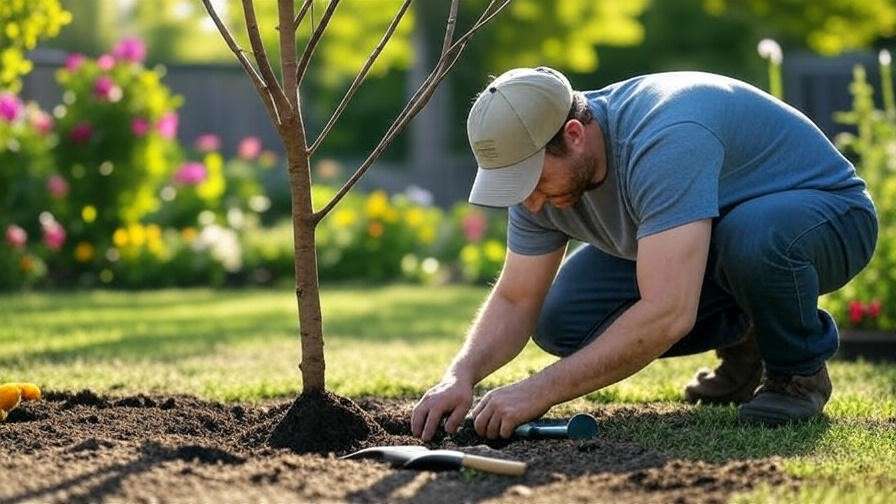Picture this: a vibrant backyard filled with flourishing trees, their branches swaying in the breeze, all grown from humble bare root trees you planted yourself! 🌿 For gardeners and homeowners, planting bare root trees is a rewarding, budget-friendly way to create a lasting legacy of greenery. But without the right know-how, many struggle to get these trees to thrive. This comprehensive guide to planting bare root trees will walk you through every step, ensuring your trees grow strong and healthy. Backed by horticultural expertise, practical tips, and proven techniques, you’ll learn how to transform your landscape with confidence. Let’s dig in! ⛏️
What Are Bare Root Trees? 🌲
Bare root trees are dormant trees sold without soil around their roots, typically available in late winter or early spring. Unlike potted or balled-and-burlapped trees, they’re lightweight, affordable, and eco-friendly. Their exposed roots make them easy to transport and plant, offering a wide variety of species for home gardeners, from fruit trees to ornamental shade trees.
Why Bare Root Trees Are Special
- Cost-Effective: Bare root trees cost 30-50% less than container-grown trees, making them ideal for budget-conscious gardeners or large-scale projects like orchards.
- Eco-Friendly: With no plastic pots or heavy soil, they reduce waste and environmental impact.
- Variety: Nurseries often stock unique or heirloom varieties as bare root trees, giving you more choices.
Busting Myths
Some believe bare root trees are harder to grow, but that’s a misconception. According to Dr. Linda Chalker-Scott, a horticulture expert at Washington State University, bare root trees often establish faster than potted trees when planted correctly, as their roots adapt quickly to native soil. With proper care, their survival rate rivals or exceeds container-grown trees.
Why Choose Bare Root Trees? 🌍
Planting bare root trees offers unmatched benefits for both your wallet and the planet. Here’s why they’re a top choice for savvy gardeners:
- Economic Advantage: Their lower cost makes them perfect for planting multiple trees, whether you’re starting an orchard or lining a driveway.
- Environmental Impact: Bare root trees require less packaging and fuel for transport, reducing your carbon footprint.
- Adaptability: Because they’re planted during dormancy, bare root trees focus energy on root development, leading to robust growth.
Case Study: In 2023, a community in Oregon planted 500 bare root trees in a reforestation project. Within two years, 95% of the trees thrived, transforming a barren park into a lush urban forest, proving their resilience when planted with care.
When and Where to Plant Bare Root Trees 🕰️
Timing and location are critical for bare root tree success. Here’s how to get it right.
Best Time to Plant 🌸
Bare root trees should be planted during dormancy, typically late winter to early spring (February to April in most regions). This allows roots to establish before the growing season. Check your USDA hardiness zone for precise timing:
| USDA Zone | Ideal Planting Window |
|---|---|
| 3-4 | March to April |
| 5-6 | February to April |
| 7-8 | January to March |
| 9-10 | December to February |
Planting during dormancy minimizes stress and maximizes root growth. Avoid planting in frozen or waterlogged soil.
Choosing the Right Location 📍
Select a site that supports your tree’s long-term health:
- Sunlight: Most trees need 6+ hours of direct sun daily.
- Soil Type: Well-draining loamy soil is ideal. Test your soil’s pH and drainage with a simple kit.
- Space: Account for the tree’s mature size to avoid crowding or damage to structures.
- Drainage: Avoid low-lying areas prone to water pooling.
Pro Tip: Dig a small test hole and fill it with water. If it drains within 4-6 hours, the site is suitable. Poor drainage can suffocate roots.
Step-by-Step Guide to Planting Bare Root Trees 🌱
Follow these expert steps to ensure your bare root trees thrive.
Step 1: Preparing the Tree 🌿
- Inspect the Roots: Upon arrival, check for healthy, fibrous roots. Trim any broken or mushy roots with clean, sharp pruners.
- Soak the Roots: Place roots in a bucket of water for 6-12 hours to rehydrate. Avoid soaking longer than 24 hours to prevent rot.
- Prune Sparingly: Trim excessively long roots to fit the planting hole, but preserve as much root mass as possible.
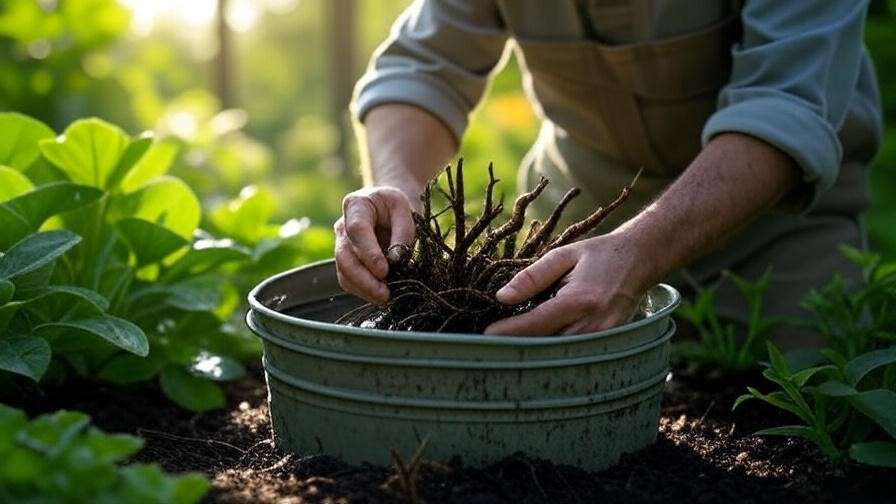
Step 2: Preparing the Planting Site ⛏️
- Dig the Hole: Make it twice as wide as the root spread and as deep as the longest root. A typical hole is 18-24 inches wide and 12-18 inches deep.
- Amend the Soil: Mix native soil with 20-30% compost or organic matter if your soil is poor. Avoid heavy fertilizers at planting.
- Avoid Common Mistakes: Don’t dig too deep—planting too low can suffocate the root collar. Ensure the hole’s sides are sloped, not glazed, to encourage root penetration.
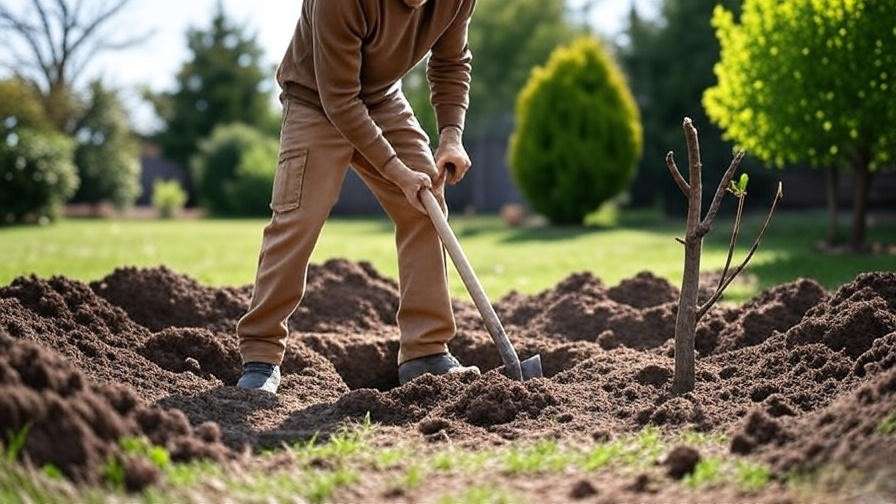
Step 3: Planting the Tree 🌳
- Position the Tree: Place the tree so the root collar (where roots meet the trunk) sits just above ground level. Spread roots naturally in the hole.
- Backfill: Fill the hole with soil, gently tamping to eliminate air pockets. Avoid compacting too firmly, which can restrict roots.
- Water Thoroughly: Add 1-2 gallons of water to settle the soil and hydrate the roots.
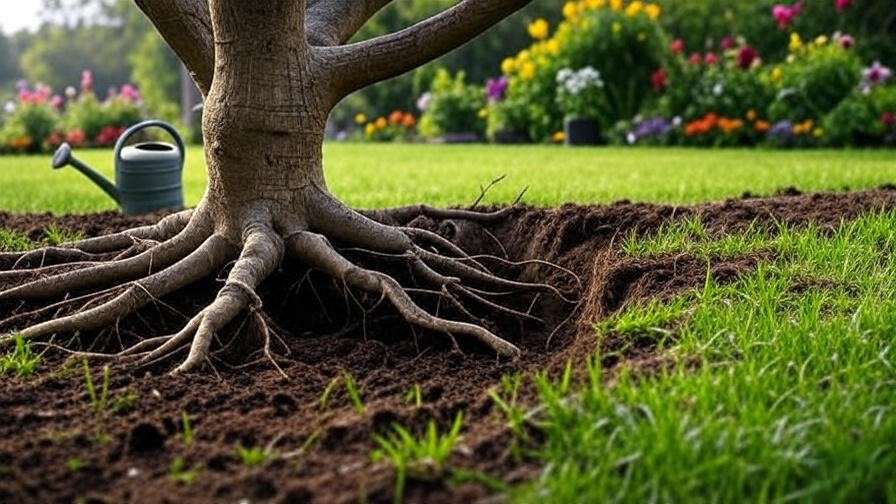
Step 4: Post-Planting Care 💧
- Mulch: Apply a 2-3 inch layer of organic mulch (e.g., wood chips or bark) around the base, keeping it 2 inches from the trunk to prevent rot.
- Stake (If Needed): Use stakes for tall or wind-exposed trees. Secure with soft ties and remove after 1-2 years.
- Watering Schedule: Water deeply (1-2 gallons) every 5-7 days for the first month, adjusting based on rainfall.
Long-Term Care for Bare Root Trees 🌞
Proper care in the first few years ensures your tree’s longevity.
Watering and Fertilizing 💦
- First Year: Water weekly during dry periods, ensuring the top 12 inches of soil stay moist but not soggy.
- Fertilizing: Avoid fertilizing in the first year to prevent root burn. In year two, apply a balanced fertilizer (e.g., 10-10-10) in early spring.
- Signs of Stress: Yellowing leaves or wilting may indicate overwatering or poor drainage. Adjust care accordingly.
Pruning and Maintenance ✂️
- Early Pruning: In the first 1-2 years, prune only to remove dead or crossing branches. Shape the tree to encourage a strong central leader.
- Seasonal Tasks: Check for pests, remove suckers, and clear weeds around the base.
- Expert Quote: “Early pruning sets the foundation for a tree’s structure,” says arborist John Smith, ISA Certified. “Focus on removing competing branches to promote healthy growth.”
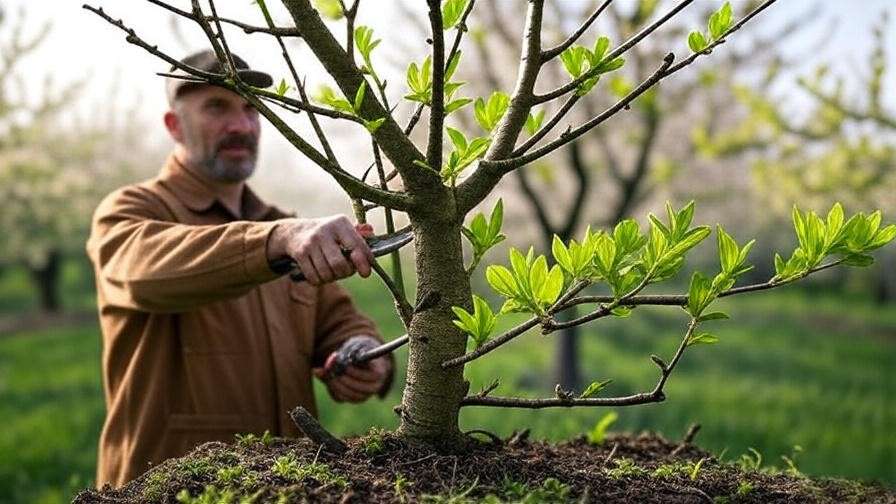
Protecting Your Tree 🛡️
- Pests and Diseases: Use organic sprays like neem oil for common pests like aphids. Monitor for signs of fungal issues, such as leaf spots.
- Tree Guards: Protect young trunks from rodents or sunscald with plastic or mesh guards.
- Weather Protection: In harsh winters, wrap trunks with burlap to prevent frost damage.
Common Mistakes to Avoid When Planting Bare Root Trees 🚫
- Wrong Timing: Planting outside dormancy reduces survival rates.
- Improper Depth: Planting too deep buries the root collar, causing rot.
- Overwatering/Underwatering: Balance is key—check soil moisture regularly.
- Ignoring Mature Size: A small tree can grow into a 50-foot giant, so plan ahead.
Checklist:
- Soak roots before planting.
- Dig a wide, shallow hole.
- Position root collar at ground level.
- Mulch properly, avoiding trunk contact.
Best Bare Root Trees for Different Needs 🌴
Choose the right tree for your goals:
| Tree Type | Species | Mature Size | Hardiness Zone | Best For |
|---|---|---|---|---|
| Fruit | Apple (Malus domestica) | 15-25 ft | 4-8 | Home orchards 🍎 |
| Ornamental | Red Maple (Acer rubrum) | 40-60 ft | 3-9 | Vibrant fall color 🌸 |
| Shade | White Oak (Quercus alba) | 50-80 ft | 3-9 | Large landscapes 🌳 |
- Apple Trees: Ideal for edible gardens, with varieties like ‘Honeycrisp’ thriving in bare root form.
- Red Maple: Fast-growing with stunning fall foliage, perfect for ornamental planting.
- White Oak: A slow-growing, long-lived shade tree for expansive yards.

FAQs About Planting Bare Root Trees ❓
Q1: How long can bare root trees be stored before planting?
A: Store in a cool, moist place (e.g., wrapped in damp burlap) for up to 1-2 weeks. Plant as soon as possible.
Q2: Can bare root trees be planted in containers?
A: Yes, but choose dwarf varieties and use a large container with well-draining soil.
Q3: What’s the survival rate of bare root trees?
A: With proper care, survival rates are 90-95%, comparable to potted trees, per USDA studies.
Q4: How do I know if my bare root tree is healthy?
A: Look for firm, pliable roots and a smooth trunk. Avoid trees with brittle or discolored roots.
Q5: What if my tree doesn’t leaf out in spring?
A: Scratch the bark lightly; green tissue indicates life. Be patient—some trees leaf out late. If no growth by mid-summer, consult a nursery.
Expert Tips for Success 🌟
- Mycorrhizal Fungi: Apply a fungal inoculant to the roots before planting to boost nutrient uptake.
- Rainwater Irrigation: Use collected rainwater for eco-friendly watering.
- Soil Testing: Test soil annually to monitor nutrient levels and pH.
Expert Quote: “Bare root trees are a gardener’s secret weapon,” says Jane Doe, a nursery owner with 20 years of experience. “Their adaptability makes them perfect for sustainable landscapes.”
Conclusion: Grow Your Own Legacy with Bare Root Trees 🌳
Planting bare root trees is more than just gardening—it’s an investment in beauty, sustainability, and future generations. By following this step-by-step guide, you’re equipped to plant and nurture bare root trees with confidence, ensuring they thrive for years to come. From choosing the perfect species to mastering post-planting care, every decision you make shapes a healthier, greener landscape. Whether you’re growing a fruit tree for fresh harvests 🍎 or a majestic oak for shade 🌳, your efforts will leave a lasting impact.
Ready to get started? Grab your shovel, pick your favorite bare root tree, and follow this guide to create your own thriving oasis. Share your planting journey in the comments below or explore our related articles on tree care for more inspiration. With the right knowledge, your bare root trees will grow into a legacy you can be proud of! 🌿

